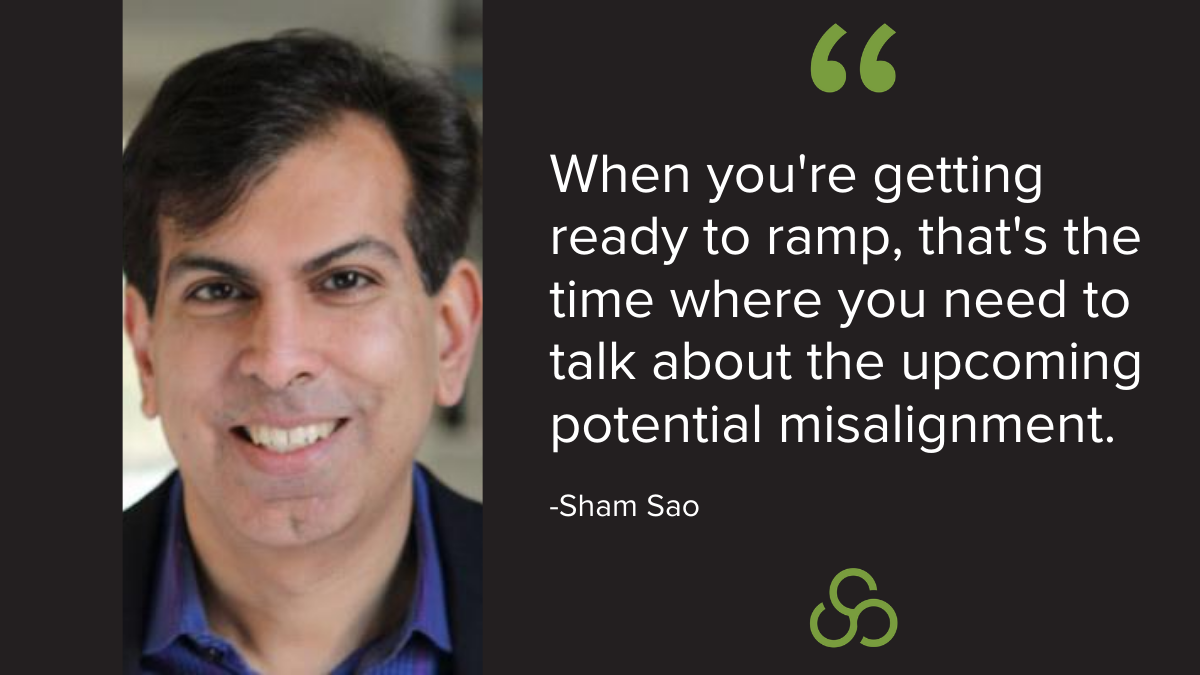
What lessons has Sham Sao, GM & Board Director for think-cell, learned regarding collaboration between sales and marketing?
Find out in this clip from the What Sales Can Learn From series.
Carole Mahoney:
So here's the hot seat question for you. You ready?
So out of all of the things we've talked about, we've all gone through the things where we've learned from our own mistakes. So what is a big mistake either that you've made or that you've seen be made, and what was learned from it that the rest of us can learn from? And it can be in relation to sales and marketing alignment, or anything.
Sham Sao:
Yeah, I would say to me, the one I've seen from my teams, as well as from other companies that I would advise, is this one about when you're really pushing the pedal to the metal, and you are putting pressure on marketing and really drive up the leads that you have to put extra focus on understanding those new leads that are coming. And be collaborative and have sales needs to understand too, right? That we need to collaborate together to make these new sources be productive. And it's not just, because sales has got the high goal too, right? And that's the place where I've seen, because and maybe it's just because I work a lot with companies that have high growth goals. But those are the ones where the CEO has high expectations. You see this plan that looks like this marketing is going like this and they usually get there... But there's usually some friction that happens where this big pile of leads comes in and people have some pain and sorting through that and how they work on that.
So when you're getting ready to ramp, that's the time where you need to talk about the upcoming potential misalignment, right? And how do we prepare to make sure that that doesn't happen to us?
Carole Mahoney:
Right. And don't forget that as those leads increase, if you're not also investing in developing the abilities of your sellers and managers to deal with those different type of leads or style of leads or sales process, you're expecting, but you're not actually supporting. So we're going to make sure that there's alignment there, too.
Sham Sao:
Yeah, that's exactly. And I know you do a lot of coaching with teams as well, and that's critical too. And it may be the case that a sales team needs to have two or three different avenues of addressing different kinds of leads now. And that needs to be agreed on upfront. I've seen also some instances where a sales team doesn't want to do that and it may be with good reason. And maybe that the skillset of the team is such that if they've got this homogeneous path, that they need to put people through to keep their throughput and their velocity high, and if they have to start adopting all over the place, then it messes up their cadence. Right?
Carole Mahoney:
Right.
Sham Sao:
And so if that's the case, then maybe it's pulling out a special team. Maybe you've got two or three reps that are more nimble that have been with the company or just get it more and you say, okay, we're going to give this new lead pool to this pool of reps here and see if they can learn how to leverage this pool of leads.
So doing things like that and saying, not just trying to force it in, jam it down and say, we're just going to make the sales team do it. Sometimes they can. Sometimes not everybody is going to be able to do it right away. Sometimes you might need to give a month of coaching before they can. Sometimes you might need to pull out some people say, what do you do to make it work? You sometimes you can't just force it.
Carole Mahoney:
Yeah. So you've got to be able to match lead type to skillset, and put alignment there. But then also look at if you're projecting growth and you're putting this demand on marketing, you've also got to expect that if you've got a group of team that they're really good at handling inbound leads, and now you want them to prospect enterprise deals, there's going to need to be a learning curve factored in there. And it's not necessarily guesswork. You can actually align skillsets to those types of things, but you've got to factor those things in. Otherwise, you're going to burn out your team and your team's going to turn, and then it gets even more expensive for growth.
Sham Sao:
Yeah. And on the flip side with marketing as well. So if marketing knows there's a cost to sales of different kinds of things that I go after. And so, can I focus on some programs that have similar kinds of outputs? Because yes, for marketing, it may be nice to go and do 15 different kinds of tests and build upon 50 and different kinds of leads. But it's probably unrealistic to expect the sales team to be able to absorb those kinds of different leads. If you can bucket them and say, "Okay, there's really three buckets of these. These are all similar. These are all similar. These are all similar. And I think the way we can follow up on those." And so we have three paths that just makes it more amenable. So I think the both teams need to realize the cost for each other.
So sales needs to realize, "Hey, marketing has got this really steep thing. They're going to need to experiment. So we're going to need to work with them. Because otherwise we can't expect them to just magically make up these leads out of the same exact quality it's not going to happen. Right.
Carole Mahoney
Right.
Sham Sao:
And on the flip side, marketing's got to realize, okay, sales has got to take these things and absorb them and convert them. So we've got to have some mechanism to create some homogeneity between these things, because if we just throw all these different things at them and don't have good bucketing, they're not going to be able to absorb and convert. We can't just point the finger at sales and say, well, we gave you all this stuff you didn't convert.
Carole Mahoney:
Yeah. And it's almost like creating specialized teams or pods. So if you have these three different pathways, that's create and match skillset and have marketing and organize it that way. And I think the experimentation, the iteration, the feedback loop, when you have it broken out into smaller teams and pods, because a lot easier to manage and even compare and contrast to some degree.
Check out more from the What Sales Can Learn From Series!
This is the last video in this series featuring Sham Sao. If you missed any, or would like to watch the full session on demand, click here! To follow Sham on LinkedIn, click here. To learn more from the experts on season two, click the button below.






